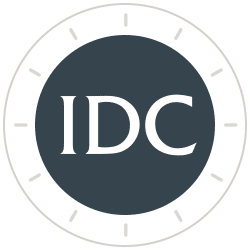The Operating Profit Margin
Even institutions with long track records of good management and growing net worth can very quickly reverse direction, and spin out into a value-destroying mode of operation...especially during times of economic stress. And too often, much damage is done before management recognizes that it has a problem, is able to diagnose its causes, and take corrective action.
The ability to respond quickly to changing conditions can make all the difference. That’s why it’s crucial for management and directors to have an accurate and timely means of taking the financial temperature of their institution on a regular basis. To this end, IDC Financial Publishing uses the Operating Profit Margin, which we believe to be the best measure of productivity in delivery of institution services.
What is the Operating Profit Margin?
The Operating Profit Margin is a deceptively simple calculation; operating profit as a percentage of net operating revenue (the inverse of the efficiency ratio). Net operating revenue is the sum of net interest income plus non-interest income. Operating income equals net operating revenue less operating costs (excluding non-recurring gains/losses from asset sales and amortization expense of intangibles). It measures the percent of net operating revenues consumed by operating expenses, providing the remaining operating profit.
Clearly, the higher this margin, the more favorable and the more efficient is your institution. And you can increase this margin in either (or both) of two ways: 1) by reducing operating expenses, and/or 2) by raising the denominator (increasing yields on earning assets, raising noninterest income, or reducing your cost of funds).
The standard deviation or volatility in the operating profit margin, over a 5-year period, best illustrates the risk in the operating profit margin. The lower the risk, the less complex and more stable the profit structure. IDC considers a range of less than 3% as “Low Risk”, 3%-5% “Average Risk”, 5%-10% “Above Average Risk”, and above 10% “High Risk”. A “High” volatility (over 10%) indicates "complexity" in the financial structure or inability to control operating costs. Interest rate and operating risks in financial institutions with limited capital creates potential regulatory intervention.
A further advantage of regularly monitoring your Operating Profit Margin is its diagnostic dimension. Because IDC analyzes each component of the margin separately, it enables you to determine the positive or negative impact of each factor on productivity. You can see at a glance where the problems lie, and move quickly to correct the situation.
While IDC’s CAMEL rating system for financial institutions takes into account a series of other margins as well, we’ve found a remarkably strong correlation between changes in the Operating Profit Margin, the overall CAMEL rating, and return on equity capital.
IDC is going ONLINE! IDC Financial Publishing, Inc. is excited about the launch of its online platform for presenting the IDC Rank of Financial Ratios and the CAMEL Analysis. Over 13,000 institutions will be readily available with rank, financial ratios, and commentary… all with a CAMEL Analysis.
